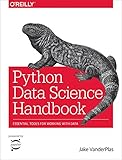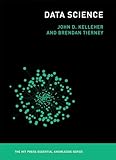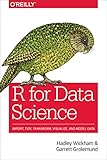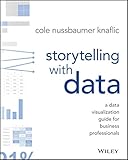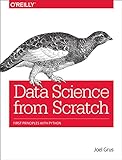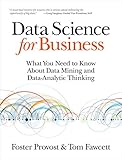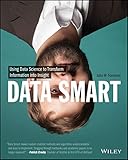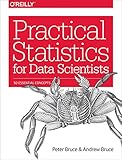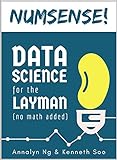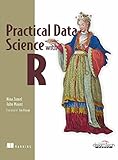Top 10 Data Science Books [Updated 2025]
Data science is a field that involves scientific methods, processes, algorithms, and systems to extract knowledge and insights from raw data in various forms, both structured and unstructured data. Below is the list of books on data science that you must read in 2025 –
- Python Data Science Handbook ( Get this book )
- Data Science (MIT Press Essential Knowledge series) ( Get this book )
- R for Data Science ( Get this book )
- Storytelling with Data ( Get this book )
- Data Science from Scratch ( Get this book )
- Data Science for Business ( Get this book )
- Data Smart ( Get this book )
- Practical Statistics for Data Scientists ( Get this book )
- Numsense! Data Science for the Layman ( Get this book )
- Practical Data Science with R ( Get this book )
Let us discuss each of the data science books in detail along with its key takeaways and reviews.
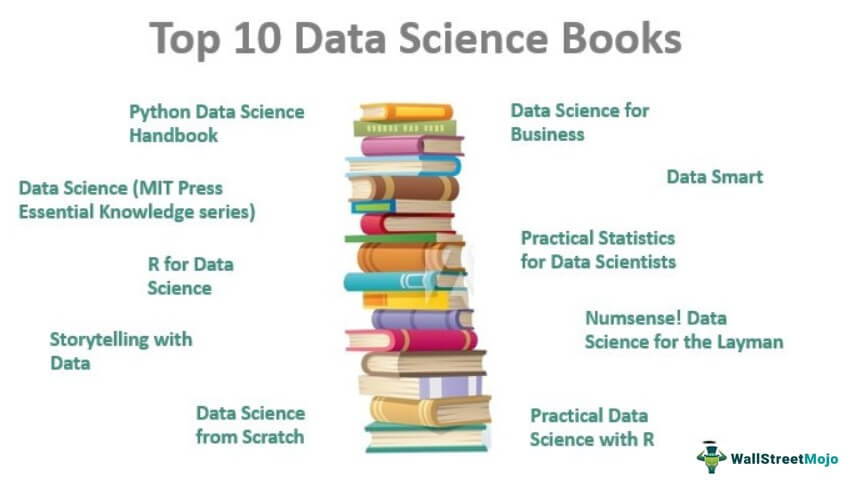
#1 – Python Data Science Handbook: Essential Tools for Working with Data
Author: Jake VanderPlas
Book Review:
The book is ideally suited to those that already know the basics of the Python language or already know how to program in another language like R or Julia and want to learn how to use Python for data science. It explains all the needs of the entire Data Science process from getting data, exploring data, and communicating and visualizing the results.
Key Takeaways
- Data Manipulation.
- Python data techniques.
- Machine Learning.
#2 – Data Science (MIT Press Essential Knowledge series)
Author: John D. Kelleher and Brendan Tierney
Book Review:
The main aim of this book is to improve decision making through analysis of data. This introduces the basics of machine learning and discusses how to link machine learning expertise with real-world problems.
Key Takeaways:
- Ethical and legal issues and developments in data regulation.
- Success Principles.
- Future impact of data science.
#3 – R for Data Science: Import, Tidy, Transform, Visualize, and Model Data
Author: Hadley Wickham and Garrett Grolemund
Book Review:
This book will give a clear understanding of discovering natural laws in the structure of data. This will tell you how to use the R Programming language for data analysis. This also tells how to clean the data draw plots and how to use the grammar of graphics, literate programming, and reproducible research to save time and also many other things.
Key Takeaways:
- Data Wrangling.
- Data Visualization.
- Exploratory Data Analysis
#4 – Storytelling with Data: A Data Visualization Guide for Business Professionals
Author: Cole Nussbaumer Knaflic
Book Review:
This book mainly explains the fundamentals of data visualization and how to communicate effectively with data. Through this book, you will be able to find out which is the crucial point for your data. This tells how to go beyond the conventional tools to reach the root of your data and how to create an informative and compelling story.
Key Takeaways:
- Understanding the situation and audience.
- Identifying the important point of the data.
- Concepts of design in data visualization.
- The power of storytelling to help your message resonate with your audience.
#5 – Data Science from Scratch: First Principles with Python
Author: Joel Grus
Book Review:
The author has clearly explained the important data science tools and the algorithms and how they can be implemented from scratch. This book contains the actual algorithms for those machine learning models, along with the theory and mathematics in it.
Key Takeaways:
- Collect, Explore, Clean, and manipulate data.
- Neural networks.
- Easy understanding of algorithms.
- Fundamentals of machine learning.
#6 – Data Science for Business
What You Need to Know about Data Mining and Data-Analytic Thinking
Author: Foster Provost and Tom Fawcett
Book Review:
It explains the fundamental principles of data science, and also the data-analytic thinking which is required for obtaining important knowledge and business information from the data. This also helps in the understanding of the techniques which are applied nowadays. This book also provides examples of real-world business problems to explain the principles.
Key Takeaways:
- Data mining.
- Data science Principles.
- Understanding of the Data science how it suits the organization.
#7 – Data Smart: Using Data Science to Transform Information into Insight
Author: John W Foreman
Book Review:
The author clearly explains how to convert raw data into actionable insight. The author also explained how to do it with the Spreadsheet. This will also help you in learning the analytical techniques, mathematics, and the magic behind the big data. Each chapter in the book will cover a different technique in a spreadsheet-like mathematical optimization, data mining in graphs, moving from spreadsheets to R programming language, and many other things.
Key Takeaways:
- Mathematics in data science.
- Artificial Intelligence.
#8 – Practical Statistics for Data Scientists: 50 Essential Concepts
Author: Peter Bruce
Book Review:
Statistics also plays an important role in Data Science. In this book, the author has clearly explained how to apply various statistical methods to data science in the present and also how to avoid them, which are in wrong use and gives you output on what’s important and what’s not. If you’re good with the R programming language and have some knowledge of statistics, this quick reference builds the gap to a larger extent in the readable format.
Key Takeaways:
- Key classification techniques.
- Statics concepts.
- Unsupervised learning methods for extracting meaning from unlabeled data.
#9 – Numsense! Data Science for the Layman: No Math Added
Author: Annalyn Ng and Kenneth Soo
Book Review:
This book gives a clear understanding of the data science and the algorithms which are used. Every algorithm is clearly explained. There are many concepts that all are covered like Neural Networks, Social Network Analysis, Decision Trees and Random Forests, Clustering, and also many more.
Key Takeaways:
- Real-world applications to illustrate each algorithm.
- Practical understanding.
- Key concepts.
#10 – Practical Data Science with R
Author: Nina Zumel and John Mount
Book Review:
It clearly explains the practical examples and fundamental principles of the data science with the programming language R. This will help in applying the R programming language and statistical analysis techniques to carefully explained examples based in marketing, business intelligence, and decision support while learning how to create instrumentation, design experiments such as A/B tests, and accurately present data to audiences of all levels.
Key Takeaways:
- Decision Support.
- Practical Examples.
- Modeling methods.
AMAZON ASSOCIATE DISCLOSURE
WallStreetMojo is a participant in the Amazon Services LLC Associates Program, an affiliate advertising program designed to provide a means for sites to earn advertising fees by advertising and linking to amazon.com.
